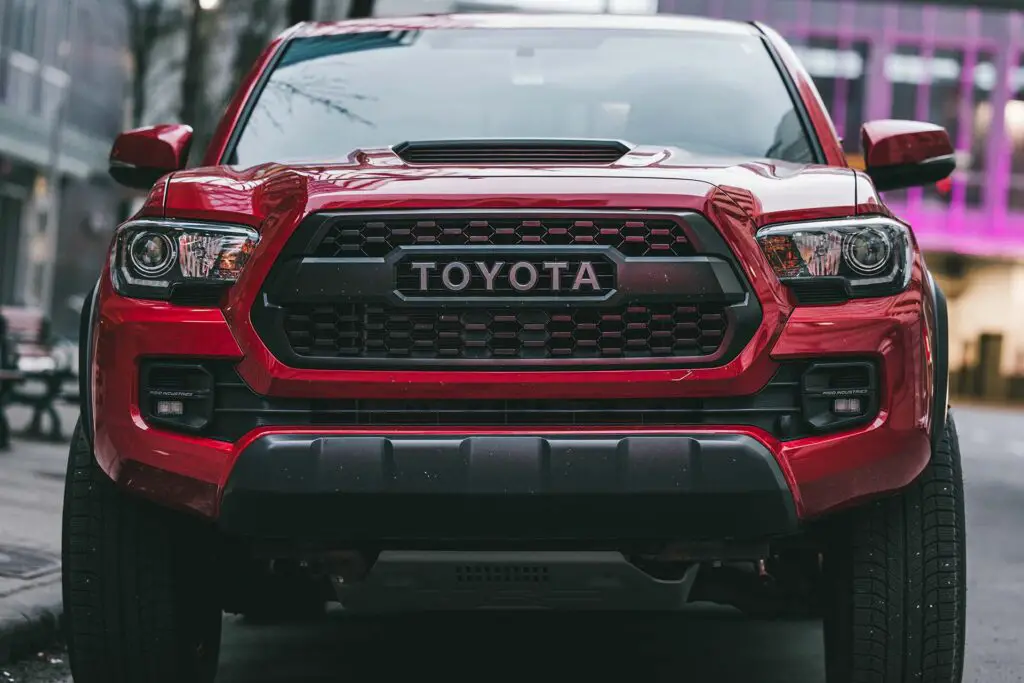When owning a Toyota, ensuring regular maintenance is key to preserving its longevity and performance. One milestone that holds particular significance is the 30,000-mile service mark. In this comprehensive guide, we’ll delve into what exactly the Toyota 30k maintenance service entails, its benefits, what to expect during the service, and how to prepare for it. Let’s dive in.
What Is the 30K Maintenance Service?
Maintaining your Toyota is vital for its longevity and performance, and the 30K maintenance service marks a crucial milestone in this journey. As your vehicle approaches the 30,000-mile mark, understanding the significance of this service becomes essential.
Let’s check out the specifics of what the 30K maintenance service entails and why it’s a must for the health of your four-wheeler. After all, as of December 2023, 9% of respondents aged 18 to 29 reported that they primarily use Toyota vehicles in North America. This puts this car company among the biggest ones.
Overview of Toyota’s 30K Milestone
As your Toyota four-wheeler nears the 30,000-mile mark, it enters a critical juncture in its lifespan, signifying the need for comprehensive maintenance. The 30K maintenance service encompasses a thorough examination and servicing of various vital components essential for your vehicle’s continued performance and durability.
The milestone holds significant importance as it allows certified technicians to address potential issues before they escalate. This also ensures your Toyota remains reliable and efficient for years to come.

Explore the Key Components of the 30K Service
The 30K maintenance service encompasses a range of crucial tasks aimed at preserving the health and functionality of your Toyota vehicle and becoming a better driver. Among the primary services performed during this milestone are:
- Oil changes. To ensure the engine continues to operate smoothly, oil changes involve draining the old oil and replacing it with fresh, high-quality oil to maintain proper lubrication and prevent friction-related damage.
- Filter replacements. Filters, including air, oil, and fuel filters, are replaced to ensure optimal engine performance and efficiency by preventing contaminants from entering critical engine components.
- Tire rotations. Rotating the tires ensures even wear and extends tire life by redistributing the wear pattern across all four tires. This service helps maintain traction, improves fuel efficiency, and enhances overall driving safety.
- Fluid inspections and top-ups. Technicians inspect various fluids, including coolant, brake fluid, transmission fluid, and power steering fluid, to ensure they are at the proper levels and free from contaminants. Top-ups or replacements are performed as needed to maintain optimal performance and longevity of vehicle systems.
- Brake inspection and maintenance. Brake components, including the rotors, brake pads, and calipers, are inspected for wear and tear. Brake fluid may also be flushed and replaced to maintain braking efficiency and safety.
- Suspension and steering checks. The suspension system, including shocks, struts, and bushings, is inspected for signs of wear or damage that may affect ride comfort and handling. Steering components are also checked and adjusted as necessary for optimal performance and safety.
Benefits of Timely 30K Service for Your Toyota
30k maintenance for Toyota four-wheelers ensures numerous benefits if scheduled on time. It goes beyond just addressing immediate concerns. Some of these benefits have a significant impact on a vehicle’s lifespan, performance, and efficiency. This being said, let’s go over some of the key advantages your ride will experience.
Extending Your Vehicle’s Lifespan
If living without a four-wheeler isn’t an option, then you should take all the steps to prolong its life. Regular maintenance, including timely servicing like the 30K maintenance, plays a crucial role in extending the lifespan of your four-wheeler. With a structured maintenance schedule, you can proactively address minor issues before they escalate into major problems. As a result, you’ll safeguard the overall health and longevity of your ride.
Regular inspections and maintenance tasks performed during the 30K service, such as oil changes, filter replacements, and tire rotations, are crucial for preventing premature wear and tear on essential components. When all these parts are replaced and proper lubrication ensured, your vehicle’s engine and other critical systems can operate more efficiently. You’ll also reduce the likelihood of costly repairs down the line.

Toyota Vehicle Care – Maintaining Performance and Efficiency
The 30K maintenance service is instrumental in ensuring that your Toyota vehicle continues to operate at peak performance and efficiency levels. Addressing key components and performing essential maintenance tasks, this service helps keep your vehicle running smoothly and efficiently, delivering an optimal driving experience.
Ensured Fluid Vitality and Filter Efficiency
One crucial aspect of the 30K service is the replacement of vital fluids, such as engine oil, coolant, and transmission fluid. Fresh fluids help lubricate and protect critical engine components, ensuring smooth operation and preventing overheating or excessive wear. Additionally, replacing worn-out filters, including air and fuel filters, promotes proper airflow and fuel delivery, optimizing engine performance and fuel efficiency.
Optimized Traction and Efficiency With Tire Rotations
Tire rotations performed during the 30K service help maintain even tread wear, ensuring consistent traction and handling characteristics. This not only improves safety on the road but also maximizes fuel efficiency by reducing rolling resistance.
Enhanced Driving Experience Through Suspension and Steering Maintenance
Furthermore, thorough inspections of suspension and steering components during the 30K service help identify and address issues that may affect ride comfort and handling. By ensuring that these systems are in optimal condition, your vehicle can deliver a smoother and more responsive driving experience, enhancing overall performance and driver satisfaction.
What to Expect During Your Toyota’s 30K Service?
Preparing for this kind of service involves understanding the procedures and tasks involved. This being said, let’s check out what you can expect during the service appointment, from comprehensive inspections to routine maintenance tasks. Get ready to learn what goes into ensuring your ride remains in top condition at the 30,000-mile mark.
Professionals Will Make an Inspection and Maintenance Checklist
In making the vehicle inspection checklist you have to put all the necessary steps. That way you’ll become a better driver and learn all the responsibilities of a car owner. However, when it comes to this kind of maintenance, you won’t have to worry about anything.
During the 30K maintenance service, certified technicians conduct a comprehensive inspection and maintenance checklist to ensure that your vehicle is in optimal condition. This checklist covers a wide range of inspection points and maintenance tasks. It’s because all this serves to preserve the performance and longevity of your four-wheeler.
Technicians carefully examine critical components such as brakes, suspension, steering, and fluid levels to identify any signs of wear, damage, or deterioration. They also perform essential maintenance tasks, including replacing air filters, spark plugs, and engine oil, to ensure the seamless operation of your vehicle.
Estimated Time and Toyota 30k Maintenance Cost
On average, Toyota has minimal maintenance expenses, totaling only $441 annually. That’s pretty good news, but when it comes to this kind of maintenance cost, it’s best to prepare our budget adequately. The cost of owning a car means you have to take care of bigger maintenance appointments. For example, those scheduled at 30,000 and 60,000-mile intervals may range from $300 to $600, depending on the required tasks.

Preparing for Your 30K Maintenance Appointment
Scheduling and preparing for your 30K maintenance appointment is crucial for ensuring a smooth and efficient service experience. Explore when to book your appointment, how to plan ahead, and what documentation or information you may need to provide. Here are the steps you can take to prepare for your upcoming maintenance appointment.
Scheduling and Service Intervals
To ensure timely maintenance, consult your Toyota service schedule to determine when your vehicle is due for its 30K service. Consult your owner’s manual or service schedule to determine the recommended service intervals for your specific model.
Typically, vehicles should undergo the 30K service once they reach approximately 30,000 miles, but this may vary depending on factors such as driving habits and environmental conditions. To avoid any delays or inconvenience, it’s advisable to book your service appointment in advance, especially during peak times or busy seasons.
What to Do After the 30K Service?
After completing the maintenance service, it’s essential to continue monitoring your vehicle’s performance and implementing proper post-service care practices. Be vigilant for any unusual noises, vibrations, or warning lights that may indicate potential issues, and address them promptly to prevent further damage.
Additionally, regularly check your vehicle’s fluid levels, including engine oil, coolant, and brake fluid, to ensure they are at the recommended levels. Keeping an eye on tire pressure and tread wear is also crucial for maintaining optimal traction and handling. Lastly, follow any specific post-service care instructions provided by your service technician and adhere to the recommended maintenance schedule to ensure the continued health and longevity of your four-wheeler.

Be Aware of the Scheduled Maintenance Importance for Your Toyota
Doing Toyota’s 30K maintenance schedule is essential for preserving your vehicle’s health and performance. When you prioritize regular maintenance and timely service intervals, you can ensure your four-wheeler remains reliable, efficient, and safe for years to come. Consult with certified Toyota service centers for all your maintenance needs to receive expert care and maximize your vehicle’s lifespan.
Frequently Asked Questions
What Does Toyota’s 30K Maintenance Service Include?
Toyota’s 30K maintenance service typically includes essential tasks such as oil changes, filter replacements, tire rotations, fluid inspections, and thorough system checks to ensure optimal vehicle performance and longevity.
Why Is the 30K Service Important for My Toyota?
The 30K service is important for your Toyota because it addresses critical maintenance needs as your vehicle reaches a significant mileage milestone. Performing essential tasks and inspections helps prevent major issues, maintains performance, and extends your vehicle’s lifespan.
How Much Does the 30K Maintenance Service Cost?
The cost of Toyota’s 30K maintenance service can vary depending on factors such as your vehicle model, location, and the extent of required maintenance. On average, expect to spend a few hundred dollars, but prices may vary based on specific services performed and any additional parts needed.
Can I Skip the 30K Maintenance if My Car Seems Fine?
It’s not recommended to skip the 30k maintenance, even if your car seems fine. Regular maintenance helps prevent potential issues from developing and ensures the longevity of your vehicle.
How Do I Know if My Toyota Needs Additional Services at 30K Miles?
To determine if your Toyota needs additional services at 30k miles, consult your owner’s manual for the manufacturer’s recommended maintenance schedule. Additionally, pay attention to any warning lights or unusual noises, and consider factors such as your driving habits and environmental conditions.








